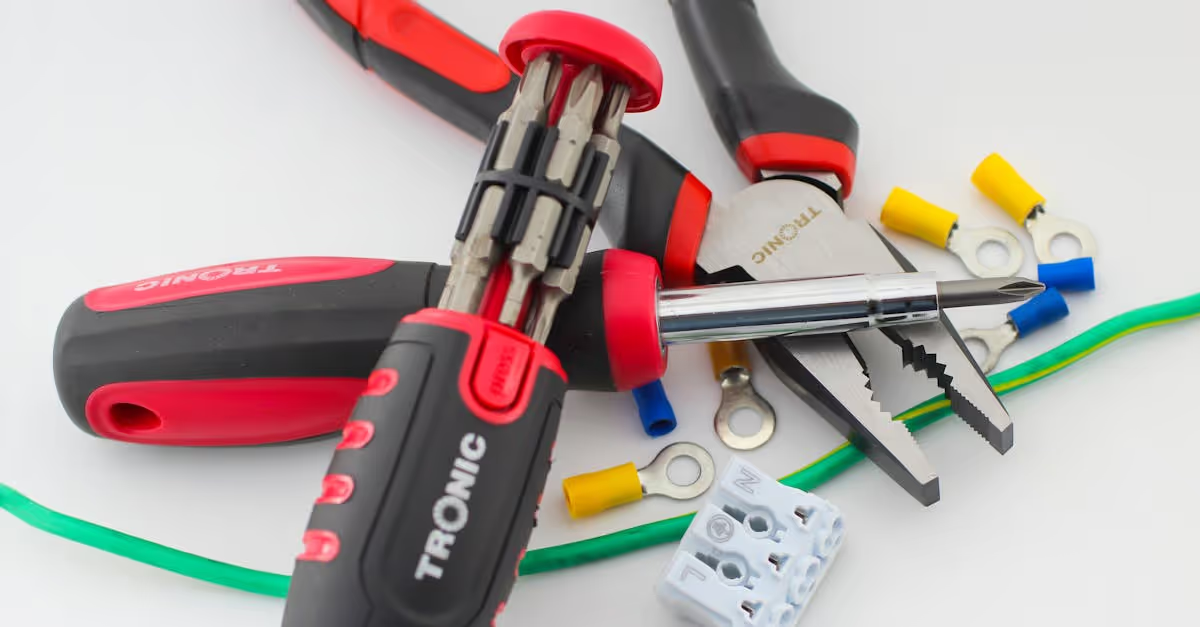Key Takeaways
- Understanding the costs of replacing a pool cover, including materials and labor, is essential for effective budgeting and avoiding unexpected expenses.
- Various pool cover types, such as safety mesh, solid vinyl, and automatic covers, significantly affect pricing and functionality, with automatic options generally being the most expensive.
- Labor costs for installation can range from $50 to $200 per hour, influenced by local rates and installation complexity; gathering multiple quotes is advised.
- Additional costs may include old cover disposal, maintenance, repair, and accessories, which can add to the overall budget.
- Seasonal timing for purchase can lead to discounts; planning replaces covers during off-peak seasons is beneficial for both cost and convenience.
- Engaging with professionals and understanding local needs and climate can enhance decision-making and ensure a suitable pool cover choice.
When it comes to pool maintenance, replacing a pool cover is a crucial task that often gets overlooked. Did you know that a worn-out cover can increase heating costs by up to 70%? Understanding the costs associated with this replacement can save us both money and hassle in the long run.
In this guide, we'll break down the various factors influencing the price of a new pool cover, from materials to labor. Whether we’re considering a basic safety cover or a high-tech automatic option, knowing what to expect will help us make informed decisions and keep our pools in top shape. Let's dive into the details and uncover what we need to know.
Overview of Pool Cover Replacement
Replacing a pool cover involves understanding various costs. We focus on two primary factors: materials and labor. Knowing these costs helps us budget effectively and avoid unexpected expenses.
Materials Cost Breakdown
Different materials impact the price of pool covers significantly. Here are some common options we may consider:
| Material Type | Estimated Cost Range (per square foot) |
|---|---|
| Safety Mesh Covers | $10 - $20 |
| Solid Vinyl Covers | $15 - $30 |
| Automatic Covers | $30 - $75 |
| Thermal Covers | $0.50 - $1.50 |
Pool cover types vary not just in price but functionality. Safety mesh covers provide security while allowing water to drain. Solid vinyl covers offer better debris protection but may require additional heating. Automatic covers, while pricier, streamline the covering process.
Labor Costs
Labor costs for pool cover installation differ based on local rates. Most companies charge between $50 and $200 per hour for labor. We will want to consider installation complexity and regional labor rates when budgeting.
Additional Costs to Consider
Let’s not forget about the occasional hidden charges. We may encounter costs for:
- Removing the old cover: Many companies charge for disposal.
- Maintenance and repair: Covers may need upkeep over time.
- Accessories: Additional items, like rollers and anchors, can add to expenses.
Making Informed Choices
Understanding these components allows us to make informed choices. We need to balance cost and quality when selecting a cover. Researching materials and labor options provides clarity.
Have we considered how the type of pool we have influences cover selection? For example, in-ground pools often require different covers from above-ground options. Local climate also affects material durability and performance.
Engaging with professionals can help us navigate any uncertainties. Many local pool stores offer consultations for those ready to dive into the decision-making process.
By being proactive, we mitigate potential issues down the road. Investing time in research ultimately pays off.
With all these components in mind, we find ourselves equipped to choose wisely. Keeping track of costs related to pool covers can help save on maintenance and heating. Awareness of the overall process makes us better stewards of our pool investment.
Factors Influencing Pool Cover Replacement Costs
When we think about replacing a pool cover, several factors affect overall costs. Understanding these elements helps us make wise choices.
Material Costs
We face various options when selecting pool covers. The type of cover significantly impacts material costs.
- Automatic Pool Covers: These covers typically require replacement every 4 to 6 years, costing between $1,800 to $3,500. The fabric type, size, and shape of our pool determine the final price.
- Safety Covers:
- Mesh safety covers cost roughly $1,000 to $3,000.
- Solid safety covers run between $1,500 to $3,600.
- Solar Covers: Basic solar covers are budget-friendly, priced between $30 to $150. If we opt for solar covers with reels, we should expect costs from $200 to $750.
- Winter Covers: These covers can be as low as $75 to $250, offering seasonal protection at an affordable price.
Choosing a cover involves understanding how each type benefits our specific needs.
Labor Costs
Labor costs vary based on local rates and the installation complexity of the chosen cover.
- Installation Factors: Each project's difficulty influences labor expenses. If the site demands special preparation or modifications, labor costs may increase.
- Average Rates: Common labor rates generally range from $50 to $100 per hour, depending on local market conditions. Experienced technicians often justify higher fees with quality work.
- Additional Charges: We might encounter extra fees for disposing of old covers or selecting additional services.
It makes sense to gather quotes from several professionals before deciding. Engaging with skilled technicians helps us feel confident that the installation goes smoothly. By considering both material and labor costs, we can budget effectively for our pool cover replacement.
Types of Pool Covers
Understanding the different types of pool covers helps us make informed decisions. Each type comes with its own set of costs, materials, and features designed for various needs.
Automatic Pool Covers
Automatic pool covers stand out as the most advanced option. Costs range from $8,000 to $20,000, including installation. We often find ourselves replacing the fabric every 4 to 6 years, which can cost between $1,800 and $5,000 depending on the size and materials. Maintenance isn't just a one-time task; it's a continuous commitment. Expect to budget $150 to $200 annually for upkeep. Labor costs for repairs typically fall between $75 and $100 per hour. These costs should factor into our overall planning, especially if an automatic system is appealing.
Manual Pool Covers
Manual pool covers offer a more budget-friendly option, typically costing between $1,000 and $3,600. They come in various materials, including safety mesh and solid vinyl. Their installation is straightforward, usually requiring just a few hours. Homeowners can save money on labor and maintenance since they don't have mechanical parts. However, they do require more effort for setup and removal. We might joke about how using a manual cover feels like a mini workout, but the peace of mind it brings regarding pool safety is priceless.
Safety Pool Covers
Safety pool covers prioritize security and protection. Costs can range from $1,500 to $4,500. They generally feature sturdy materials like mesh or vinyl, designed to withstand loads. During winter months, they keep debris out, making spring cleaning easier. While installation might be more labor-intensive, the increase in safety helps justify the costs. Have we ever had that moment of panic when a neighbor's dog runs toward the pool? These covers can help us sleep better at night. With options for both manual and automatic access, we can find solutions that fit our lifestyle.
Additional Considerations
When replacing a pool cover, it's vital to consider several factors beyond just price. By taking these additional considerations into account, we can make more informed choices and optimize our investments.
Installation Complexity
Installation complexity affects overall costs and timeframes. Simple manual covers are usually easier to install than automatic covers, which may require specialized knowledge and tools. Automatic covers involve more than just fabric replacement; they often include motor setups and electrical connections. For instance, attempting to DIY an automatic cover without the right skills may lead to extra repair costs down the line. Engaging professionals usually costs more upfront but saves us from potential headaches later.
Seasonal Timing
Seasonal timing impacts the best times to purchase and replace pool covers. For instance, buying a cover during off-peak seasons often leads to discounts. Many companies offer sales at the end of summer or early fall, so it pays to plan. Replacing covers before the winter can protect our pools from debris and harsh conditions. What happens when spring arrives, and our pool is still covered in leaves? Not a fun sight! So, timing our cover replacement right can save us both money and effort while keeping our pools in top condition.
Let’s not forget to take our specific needs and local climate into account. Engaging in discussions within our community can provide insights into what works best for others, helping us navigate our choices effectively. By doing so, we’ll make replacements smoother and more cost-effective.
Conclusion
Understanding the costs associated with replacing a pool cover empowers us to make smarter choices. By evaluating material options and labor expenses, we can find a cover that meets our needs and budget.
It's essential to consider factors like installation complexity and seasonal timing to maximize our investment. Engaging with professionals and our community can provide valuable insights, ensuring we choose the right cover for our specific situation.
With the right knowledge, we can protect our pools effectively while managing costs, leading to a more enjoyable and sustainable swimming experience.
Frequently Asked Questions
Why should I replace my worn-out pool cover?
Replacing a worn-out pool cover is essential to avoid increased heating costs and to protect your pool from debris and harsh weather. A new cover also enhances safety, ensuring your pool is secure when not in use.
What factors affect the cost of a new pool cover?
The cost of a new pool cover varies based on material, size, and installation complexity. Options like safety mesh covers, solid vinyl covers, and automatic covers come at different price points, along with associated labor costs.
How often should I replace my automatic pool cover?
Automatic pool covers typically require replacement every 4 to 6 years. The cost for this replacement ranges from $1,800 to $5,000, depending on the specific model and installation needs.
What are the different types of pool covers available?
There are several types of pool covers, including automatic, safety mesh, solid vinyl, and thermal covers. Each has its own cost, benefits, and drawbacks tailored to different needs and budgets.
What is the average cost of a safety pool cover?
Safety pool covers generally range from $1,500 to $4,500. They are designed for secure protection and can withstand heavy loads while keeping debris out during the off-season.
How much should I expect to pay for installation labor?
Labor costs for pool cover installation usually range from $50 to $100 per hour. These costs can vary based on local labor rates and the complexity of the installation process.
Are there any hidden charges when replacing a pool cover?
Yes, potential hidden charges can include the disposal of the old cover, maintenance for the new cover, and any necessary accessories. It’s essential to ask your contractor about all potential costs upfront.
When is the best time to purchase a pool cover?
Purchasing a pool cover during the off-peak season may lead to discounts. Timely replacement also ensures your pool remains protected from debris and adverse weather conditions throughout the year.
How can I ensure I choose the right pool cover for my needs?
Consider your specific pool type, local climate, and lifestyle when choosing a cover. Engaging with pool professionals for advice can further help you make an informed decision.
What maintenance do different types of pool covers require?
Maintenance varies by cover type. Automatic covers usually require annual servicing, while manual covers need regular setup and removal. Safety covers may require periodic cleaning and inspection to ensure effectiveness.






